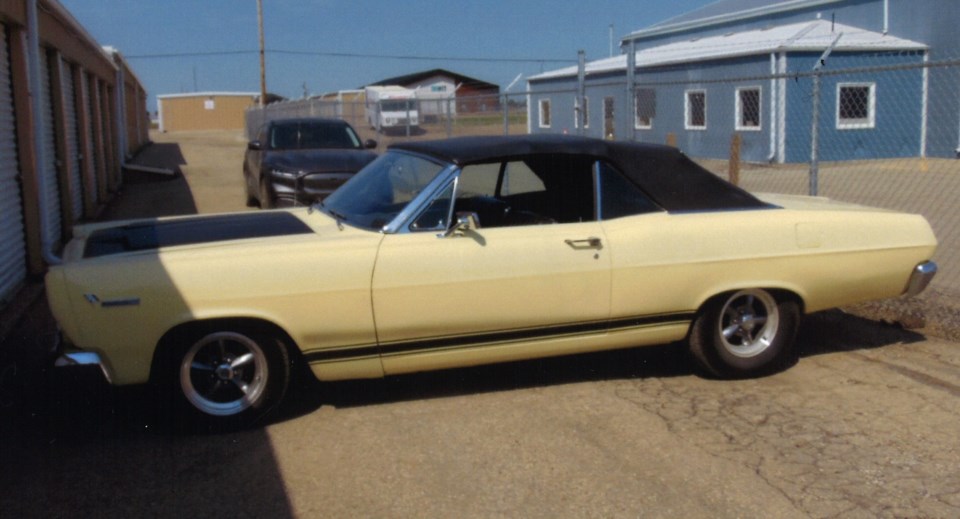MOOSE JAW - When Jerry Kaiser discovered a 1966 yellow-and-black Comet Cyclone muscle car at a used vehicle dealer in Moose Jaw in July, he turned 18 again and knew he had to have it.
His love for older vehicles began in 1966 when his father, Erlin, bought a 1965 black-and-yellow Mercury Marauder two-door hardtop with a 410 C1 interceptor engine.
“I was 18 in Grade 12 and was in love with this car,” Kaiser said.
In 1974, he came across a 1965 Mustang convertible in the compound of McCam Motors, as the company was holding the vehicle for $2,200 as part of a mechanic’s lien. However, when he returned the next time, he discovered that someone had jumped on the car and caved in the roof, trunk and hood.
A second yellow-and-black muscle car Kaiser discovered was around 2005 when he came across a 50th-anniversary edition of a black and yellow Ford Thunderbird. However, the asking price was $65,000, so he passed.
He eventually discovered the Comet Cyclone eight weeks ago and realized it was time to own a piece of his teenagehood.
“I have had old cars, including a 1966 Mustang for 37 years, but this one was an impulse, nostalgic buy … ,” he said recently. “I said, ‘I gotta have it,’ so I bought it. But I learned that it’s a dinosaur.”
The convertible sounded good, made plenty of noise and burned a ton of rubber, but in Kaiser’s mind, it couldn’t compare to his current vehicle, a 2021 electric Mustang.
“And there’s just nothing better. It’s quiet, clean and (has) unlimited, immediate power — nothing like the Cyclone,” he said.
Having “grown up” during the past two months, Kaiser decided to give the muscle car — a “dead” category of vehicles, he believes — to the Sukanen Ship Pioneer Village and Museum for a fundraiser.
“The museum deserves help, as it is an internationally known foundation,” Kaiser added. “I also want to recognize Moon and Hazel Mullin, who contributed much to the museum.”
Garry Davis, a board member with Sukanen, said the organization was shocked by Kaiser’s “very generous donation” of a beautifully restored convertible.
Kaiser wanted the museum to raffle off the vehicle, so the board will and expects to start selling tickets in 2025, while it will call the lucky number during next September’s Threshing Bee, Davis continued.
Sukanen sometimes receives donations of collector cars from people who restore them and leave them with families after they die, the board member noted. Families don’t want to throw away these vintage vehicles, so they ask the museum to take them — which is how it has built up an impressive collection.
Kaiser’s “spectacular” vehicle “is a little new” for the collection, even though it's nearly 60 years old, which is why the museum is raffling it, Davis said. In comparison, most vehicles at the museum are from the 1940s and ’50s.
If the museum had “had its ducks in a row” and been organized, it could have sold hundreds of tickets for the Comet Cyclone during this year’s Threshing Bee because of people’s interest, he remarked. Not only was the automobile parked in a visible location, but board members also drove it during the car parades on both days.
Kaiser rode in the vehicle during the second day’s parade, which the board had no problem with because he’s a neighbour and has been a big supporter over the years, Davis added. So, his donation is another “extreme example of support.”
Interested in the car? Visit www.sukanenshipmuseum.ca during the next year and watch for more information.




